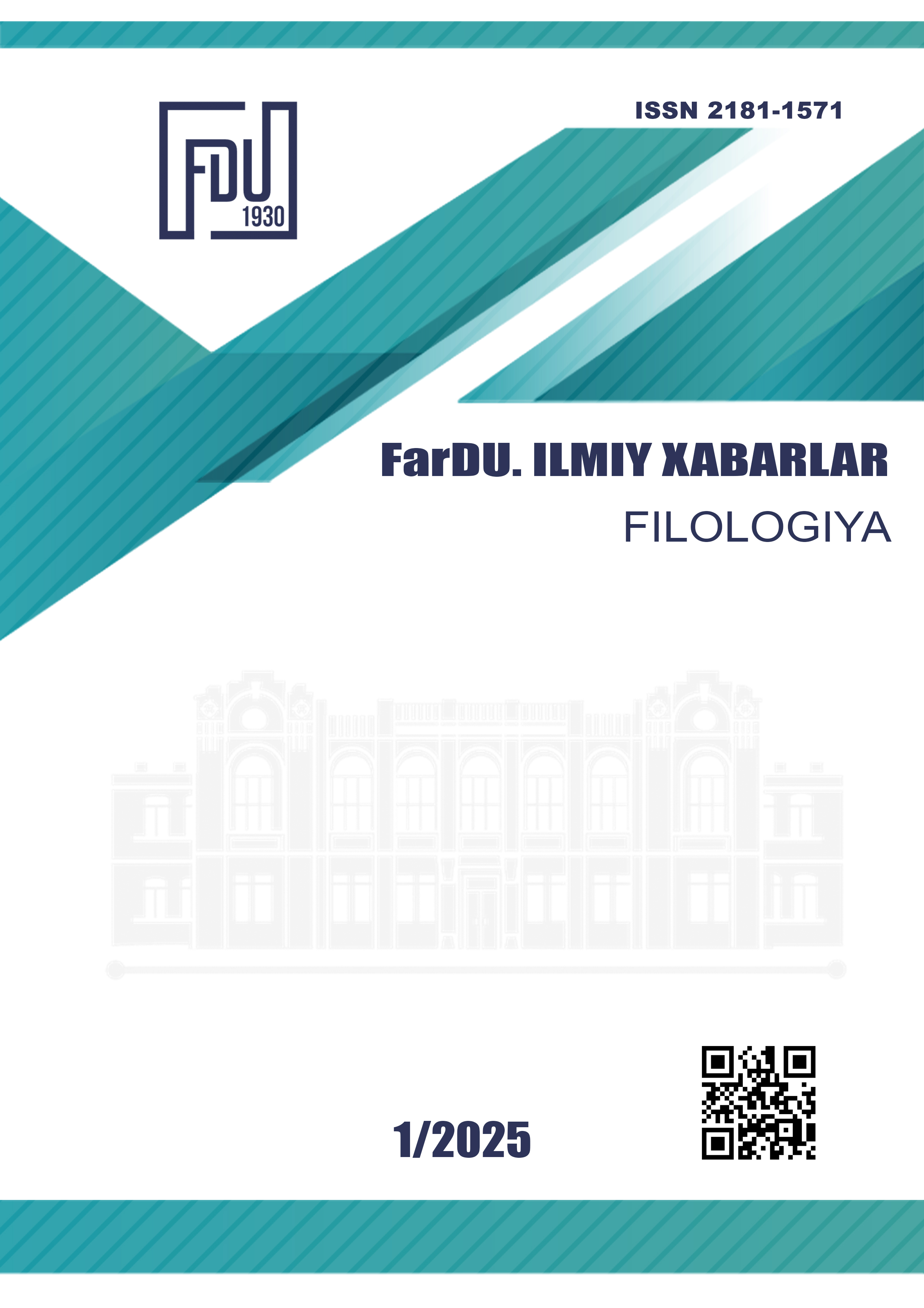STRUCTURAL-SEMANTIC ANALYSIS OF OXYMORONS USED IN ABDULLA QAHHOR’S STORY “MUHABBAT”
Keywords:
oxymoron, structural-semantic analysis, Abdulla Qahhor, “Muhabbat” story, artistic style.Abstract
This article studies the structural-semantic analysis of oxymorons in Abdulla Qahhor’s story “Muhabbat”. Oxymorons enrich the text’s semantic content and enhance their meaning. The study’s main aim is to identify how oxymoron elements are used in language and literature in Qahhor’s "Muhabbat" and to analyze their artistic and semantic roles. The results of the study show that Abdulla Qahhor, through his unique creative style, fully conveys complex internal feelings and contradictions to readers through oxymorons. Additionally, the article focuses on revealing the semantic and structural aspects of literary texts through the analysis of oxymorons.
References
Aristotle. (2008). Poetics (S. H. Butcher, Trans.). CreateSpace Independent Publishing Platform.
Eco, U. (1984). The Role of the Reader: Explorations in the Semiotics of Texts. Indiana University Press.
Galperin, I. R. (1977). Stylistics. Moscow: Higher School Publishing House.
Jakobson, R. (1960). Closing statement: Linguistics and poetics. In T. A. Sebeok (Ed.), Style in Language (pp. 350–377). MIT Press.
Qahhor, A. (1968). Muhabbat. Tashkent: G‘afur G‘ulom nomidagi Adabiyot va San’at nashriyoti.
Shklovskiy, V. (1921). Art as Technique. In L. T. Lemon & M. J. Reis (Eds.), Russian Formalist Criticism: Four Essays (pp. 3–24). University of Nebraska Press.
Vinogradov, V. V. (1938). Russkiy yazyk (Vol. 1, pp. 121–122). Moscow: Nauka.
Downloads
Published
Issue
Section
License
Copyright (c) 2025 Scientific journal of the Fergana State University

This work is licensed under a Creative Commons Attribution-NonCommercial-NoDerivatives 4.0 International License.
Most read articles by the same author(s)
- , , , , TREATMENT OF WASTEWATER CONTAMINATED WITH OIL AND OIL PRODUCTS USING TOP WATER PLANTS , Scientific journal of the Fergana State University: No. 2 (2023): Scientific journal of the Fergana State University (Exact and natural sciences)
- , SIMILARITIES AND DIFFERENCES BETWEEN THE CONCEPTS OF “WEALTH” AND “POVERTY” IN THE ENGLISH AND UZBEK LANGUAGES , Scientific journal of the Fergana State University: No. 2 (2025): FarDU ilmiy xabarlari jurnali (FILOLOGIYA)

